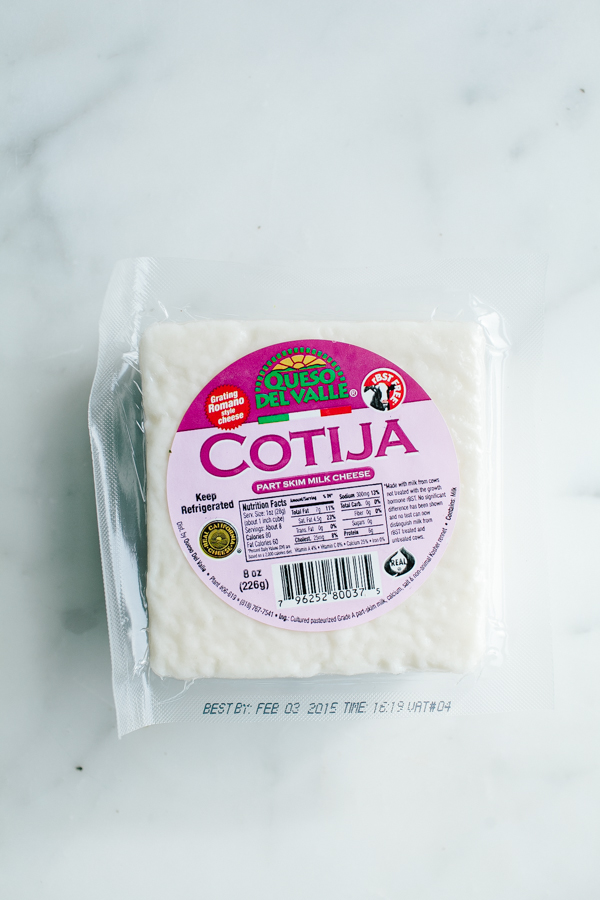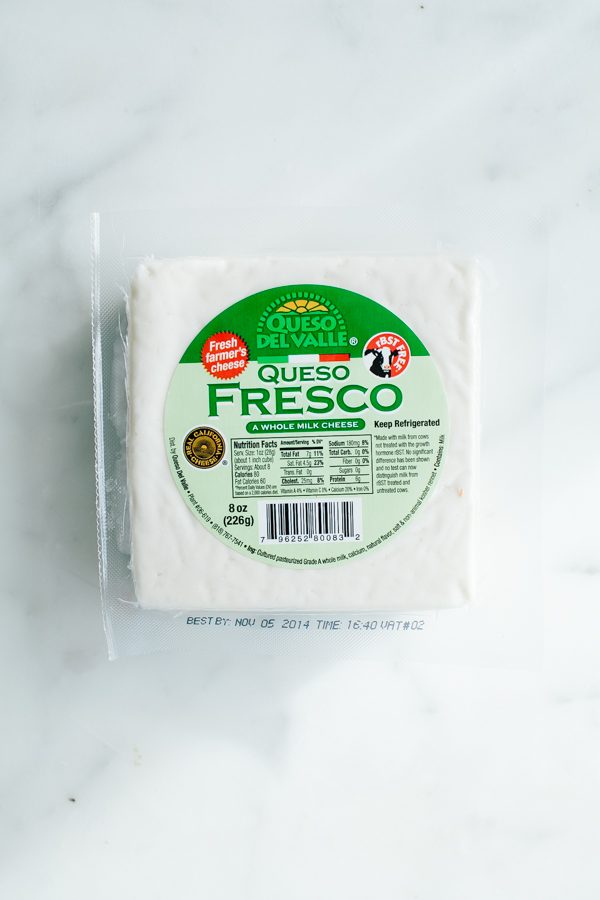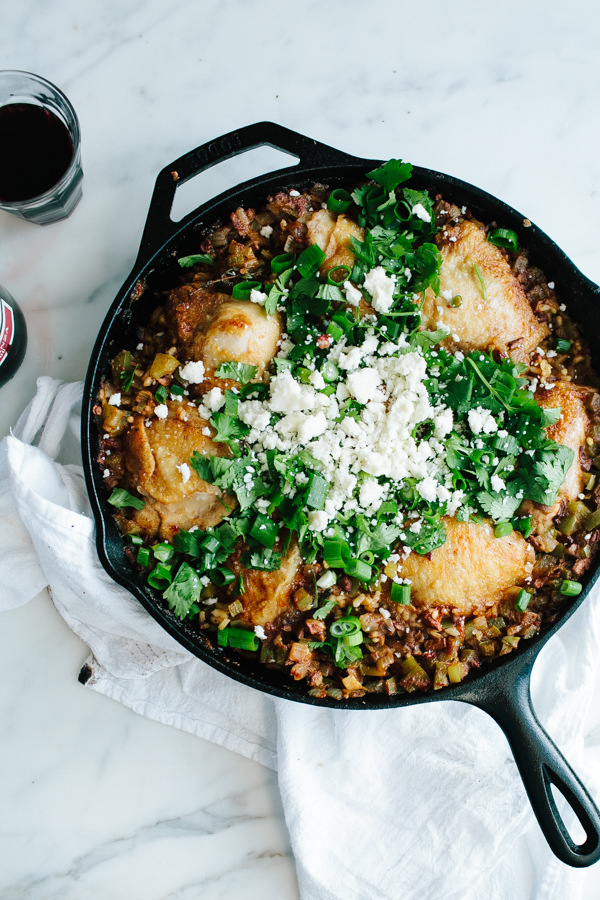My love of cheese extends far beyond the reaches of cheddar, jack and blue. There’s feta in my salads, swiss melted onto pastrami, mozzarella draped on my pizza and Cotija in my tacos.
Have you had Cotija? See, that’s the thing with cheese nearly every country, every region has their own spin on cheese and I couldn’t be happier about that. Mexico, where Cotija cheese originates, has a very distinct and different style of cheeses that are worth paying close attention to (plus, its a vital part of learning how to make authentic tacos) and now that others are noticing, they are becoming easier to find and readily available in most grocery stores.
Here’s a cheese-loves guide to the different types of Mexican cheese.

Cotija
This is my favorite and most used Mexican cheese. It’s rarely not in our cheese drawer. I love it on tacos — any type, in salads, on beans, sprinkled on top of nachos or over a bowl of Posole or tortilla soup. If you can’t find Cotija, use Parmesan in it’s place. Or, if you’re looking for places to use Cotija, think of where you would use Parmesan and try it there.

Queso fresco
The name means fresh cheese and that means that it’s very young. It’s not dry like cotija and anejo but it is generally crumbled in the same way. It’s softer, a bit creamier and much more mild in flavor than cotija. I’ve grown to love queso fresco on tacos, on top of beans and in salads. It adds a subtle creaminess that is perfect for vegetable dishes.
If you have a hard time finding queso fresco you can substitute ricotta salata, which is ricotta that has been pressed, aged and salted. Or, use a French feta, which is quite a bit more mild and less salty than the Greek version.
Anejo – Is a dry, crumbly cheese that is most often sold pre-grated. It’s the perfect topping for enchiladas or a big pot of refried beans or even a salad tossed with a citrusy vinaigrette toasted pepitas (pumpkin seeds). If you can’t find Anejo, finely grated Romano would make a great substitute.

Salty, crumbly cotija adds another layer of flavor and creaminess to so many dishes. Here I top arroz con pollo with crumbled Cotija.
Asadero
This one may be the most difficult to find but it’s worth the hunt. It’s a perfect cheese for melting which makes it a great candidate for use in chile rellenos. Like queso fresco, this cheese is more mild in flavor and creamier than the aged varieties.
Crema
Alright, so this really isn’t technically a cheese, but I’m keeping it on the list because it deserves to be known. Mexican crema is similar to our sour cream but it’s somehow creamier and not nearly as stiff as our version. Which makes it the perfect choice for drizzling over Chilaquiles or warm nachos.
I love it in tacos or spiked with garlic, a bit of Mexican oregano and finely diced jalapeno for a great dip. It’s sour but now overly so and really is worth seeking it out. If you can’t find it add a bit of cream to sour cream to achieve a similar consistency.

This is one of our favorite weeknight meals: Steak Tacos. Here crumbled queso fresco adds a soft saltiness and creamy texture to the simple tacos. Get the flank steak taco recipe here.

Share tips, start a discussion or ask other students a question. If you have a question for an expert, please click here.
Already a member? Sign in
No Responses to “It's a Cheesey Fiesta: A Guide to Different Types of Mexican Cheese”